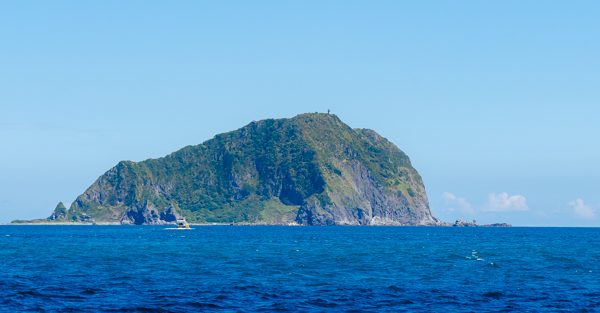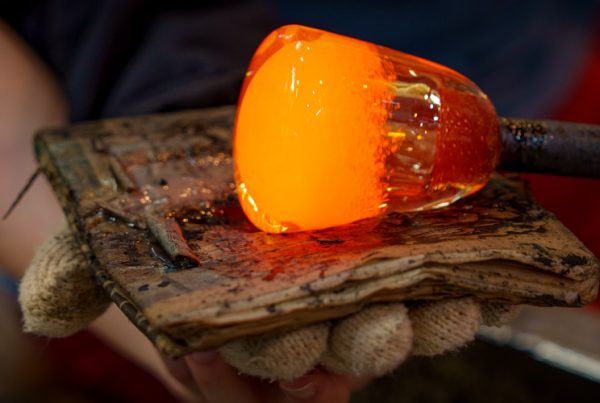Military Tunnels, Wind Lions, Otters and Birdlife
TEXT / RICK CHARETTE
PHOTOS / VISION
Kinmen’s stimulating variation in tourism attractions invites theme touring, which has become a popular travel style, especially among visitors zooming through the islands by motor scooter. Here we present three of the most popular themes, focused on the islands’ exclusive troves of military tunnels, Wind Lion God statues, and wildlife – specifically, its migratory and resident birds and its Eurasian otters. These four foci will, it might be said, deliver you to Kinmen’s underground, surface, sky, and water worlds. There’s enough choice in each category that you can pursue a single theme over multiple days. Or choose a new theme for each day of your stay.
Military Tunnels
Forcing several metaphors together, over the Republic of China’s (ROC’s) years of tension with the People’s Republic of China (PRC) the granite-built islands of Kinmen have served as unsinkable bastions housing a battalion of military fortifications dug right into the deep rock. Many of these have now been decommissioned, with a wonder-inspiring array opened for tourist visits, especially tunnels. The most famous and most visited is the giant’s-lair-sized Zhaishan Tunnel. Other key sites are the Jiugong Tunnel, Jincheng Civil Defense Tunnel (entertainingly, its entrance is on the second floor of Jincheng town’s bus station; built to house government, bank, etc. operations).

The Zhaishan Tunnel is the most remarkable of the many Cold War facilities now open for public visit. The colossal U-shaped cavern was hewn almost solely by hand from solid granite over five years in the 1960s, within a seaside breaker-bashed hill-and-cliff formation. It was used as a safe harbor for supply boats making the run to and from Taiwan proper, with a capacity of 42. There are two portals on the crashing-sea side, to ensure continuous ingress/egress if under attack. A good information display is set up outside the visitor entrance, and you’ll also enjoy the outdoor exhibit of anti-aircraft guns, supply boats, and other decommissioned equipment. Note that a pathway to the left of the entrance leads you down to coastal views of the water-level portals.
Kinmen Tunnel Music Festival Turns out that the acoustics within the Zhaishan Tunnel are pitch-perfect for live music, inspiring the use of this natural granite-walled concert hall for the creatively original Kinmen Tunnel Music Festival since 2019. Staged each autumn (October 12-13 this year), both Chinese and Western classical music are on the program, performed by premier talent invited from around Taiwan.
Wind Lion Tour
“Wind Lions” are found in picturesque spots all around Kinmen, and hunting down as many as possible of these unusual Wind Lion God statues has become a favorite touring theme with DIY travelers. Pick up one of Kinmen’s special free Wind Lion tour maps at any local tourist information center. A bonus to these quests is that they take you to places away from the main tourist routes.

There are about 80 larger Wind Lion statues in total, of varied shapes and sizes, with a hundred-plus smaller editions on rooftops. They’re placed in strategic exposed spots to deflect the winds that swoop over the flat islands in winter, protecting homes and farm fields. Centuries ago the prosperity of these (then) trading islands brought deforestation (1200s through 1600s), with land cleared for farms and salt pans. Popular lore, however, says the denudation came from cutting trees to build the massive fleet of Koxinga, the 17th-century Ming Dynasty loyalist who contested the China-invading Manchu Qing, but faced with defeat, fled to Taiwan, expelling the colonial Dutch from the island.


In Chinese folklore, the auspicious lion can also both ward off evil and attract good fortune, and thus over time Kinmen folk have also turned to the Wind Lion for safeguarding against such other undesirables as pests, flooding, and even danger at road intersections notorious for accidents.


The oldest statues are believed to date from the late 1600s. Most of the lions stand upright; others crouch, are seated, set to pounce, etc. The majority are unpainted, but many are brightly rendered in striking colors. Note how all have long, wide mouths – enabling effective swallowing of winds. Males can be distinguished by the large, exaggerated “anatomically correct” bottle gourd between their legs; females carry a pom-pom or ribbon. Old-time local belief is that touching the gourd will help ensure male offspring for expectant mothers. You may see that a statue is draped in a cape; this is generally done in gratitude by individuals for requests granted.



Birds and Otters
When you think of big islands floating in Pacific waters just off the China coast in a subtropical zone, the idea of birds migrating in great numbers seems natural. But the idea of these islands as home to “flocks” of cute furry otters strikes many as odd, particularly travelers from northern climes. Yet ’tis true! Kinmen’s particular set of 20th-century circumstances meant no development of heavy industry and little development of light. The beneficial result for today’s traveling visitors is exceptional ecotourism opportunities.
Let’s get to the otters first because no doubt that is what’s got your interest most piqued. These are Eurasian otters, which are endangered. Once spread widely in freshwater habitats throughout Europe and Asia, habitat fragmentation has left Kinmen’s otters part of one of three separate-zone subgroups. This isolation has led to the development of distinct genetic and physiological traits. Kinmen’s colony is the most stable and has the highest population density along the East Asia coastal region. Over 100 otters have been recorded here; they’ve only been recorded in six other locations along the China coast, clustered in the Yangtze and Pearl river estuaries.

The county government has helpfully created a distribution map showing where otter-trackers can find them: kinmen.travel/en/discover/nature. A quick look reveals how the otters have adapted well to Kinmen’s manmade reservoirs. Note that the best spotting opportunities are in the evening.
Now, over to the birds – 300 species have been recorded, compared to 500 for the ROC in total. The majority are migratory, and many of these overwinter in Kinmen. Two avians vying for Kinmen brand-icon status are the hoopoe and blue-tailed bee eater; the former is orange-ish with zebra-stripe wings, and the latter is a bright painter’s palette. Recommended birding destinations are the Tianpu Reservoir for bee eaters, Shuangli Wetlands for kingfishers, waterfowl, and birds of prey, Lake Lingshui, Lake Xi, and the Tiandun Sea Wall for oriental skylarks, oystercatchers, terns, and collared pratincoles, and Lake Ci for cormorants.








